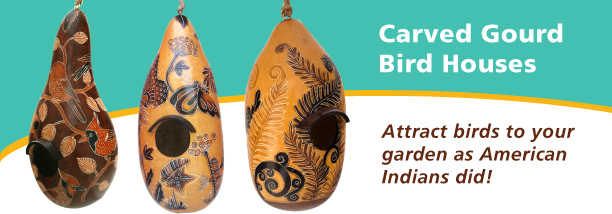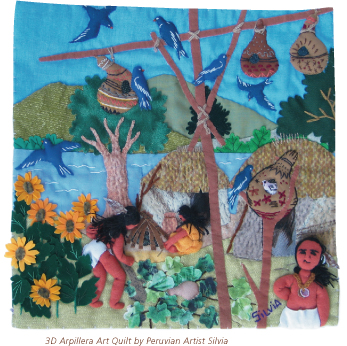 |
|
 |
Long ago, Native Americans recognized the benefits of bringing purple martin colonies to their villages and so they would hang natural gourds as nests to attract them. So great was their interaction that over multiple generations purple martins become "semi-domesticated" and still prefer to nest in gourds. Today, in the Eastern USA, these birds are almost exclusively dependent on manmade bird houses. In Indian villages, purple martins' playful behavior and happy singing provided endless entertainment, but when predators or strangers approached, these birds were quick to alert the tribe with a distinctive alarm call. Most likely, Native Americans used their regular morning song as an alarm clock and their consistent annual cycle of arrival, egg laying and departure may have helped them to keep track of the seasons! |
|
Gourd Bird House Tips * As they sway in the wind, they are less likely to be taken over by sparrows and starlings. * For a safe nest, make sure to hang your gourd bird house away from bird feeders and away from cats and predators. * Their protective coating makes them ideal for your garden but with their natural charm and hand carved beauty, you may want to hang them inside! |
Most importantly, purple martins eat thousands of insects a day, acting as natural bug zappers and bringing much needed relief on balmy summer nights. Welcome the company of these lovely birds into your yard by hanging a few gourd bird houses just as the native American Indians did! |
